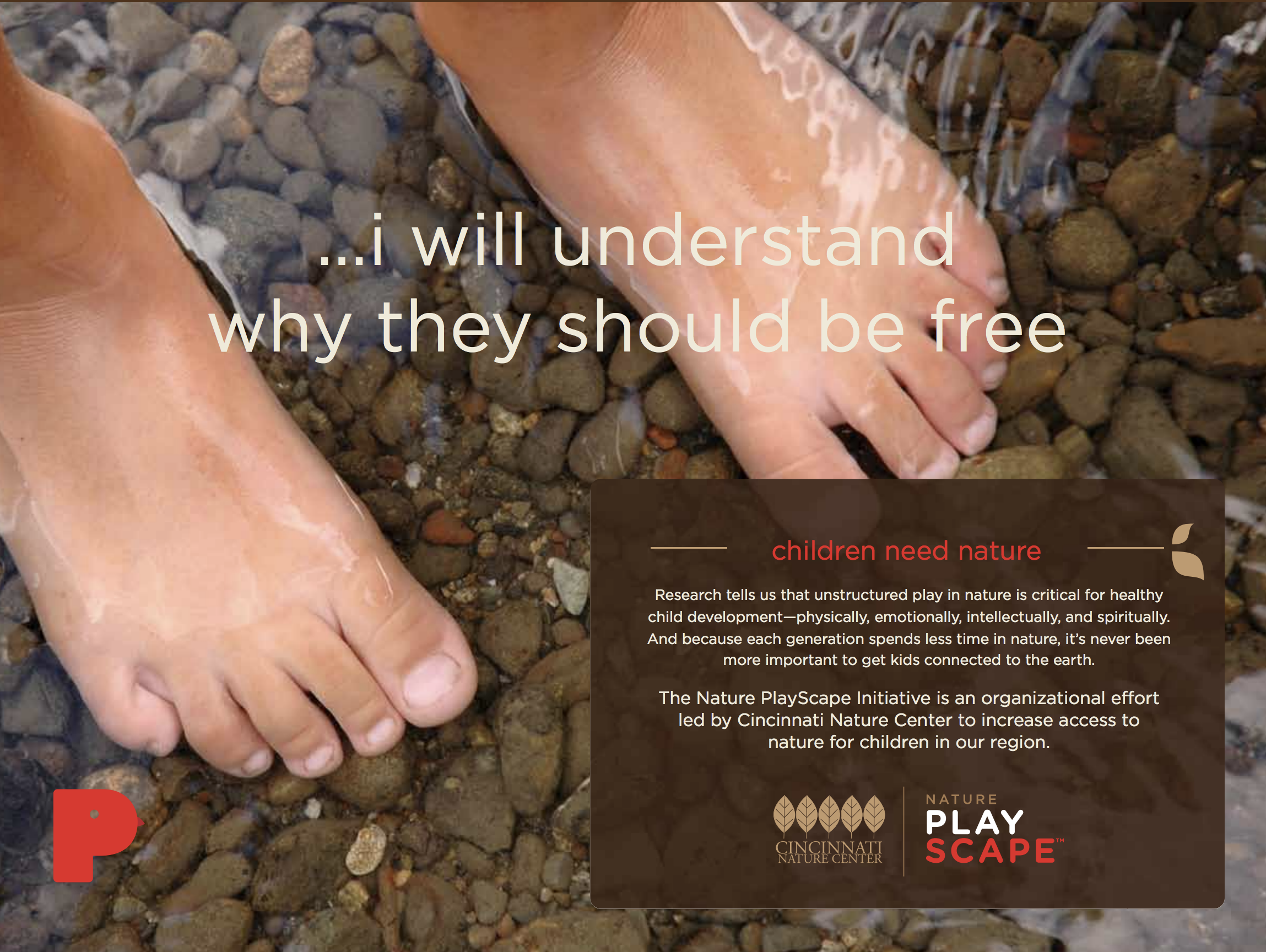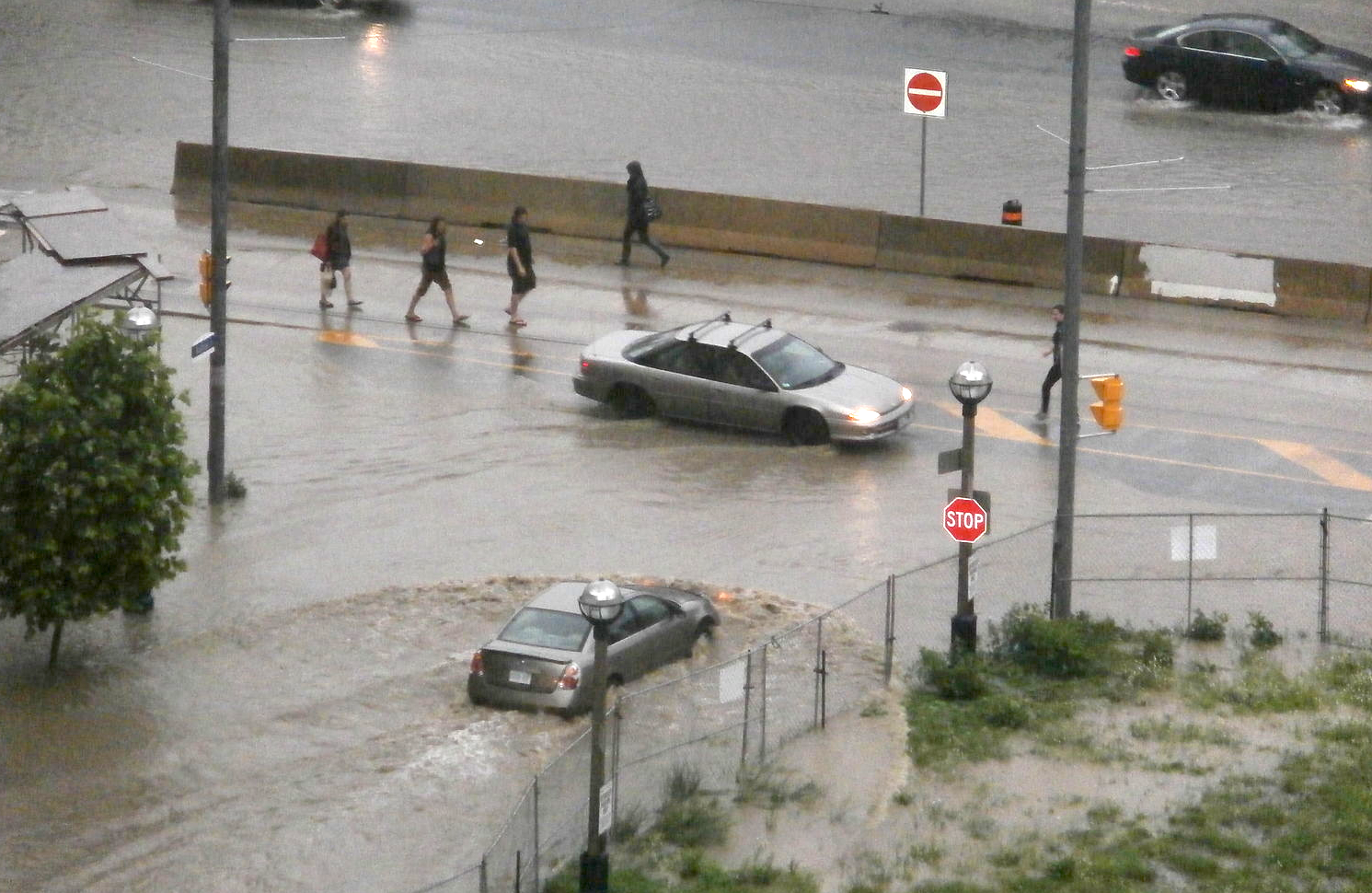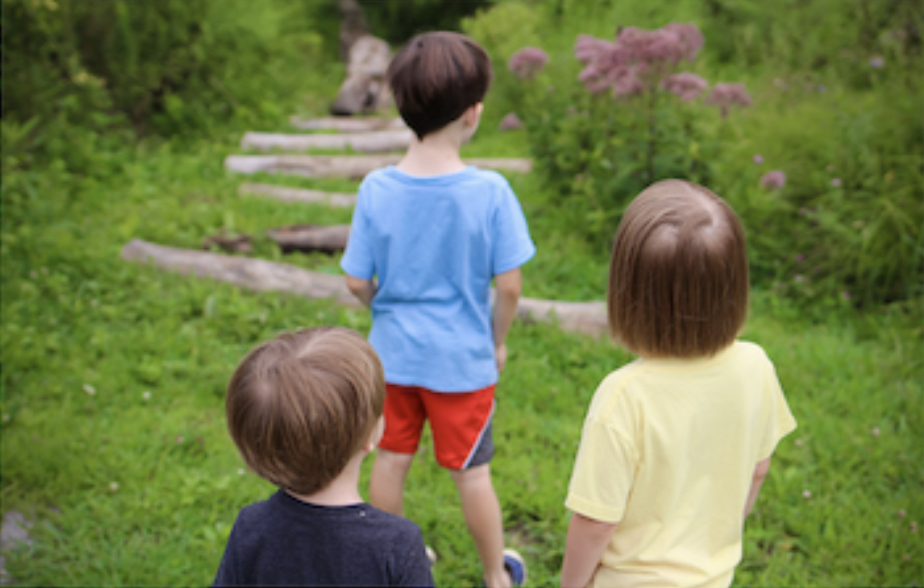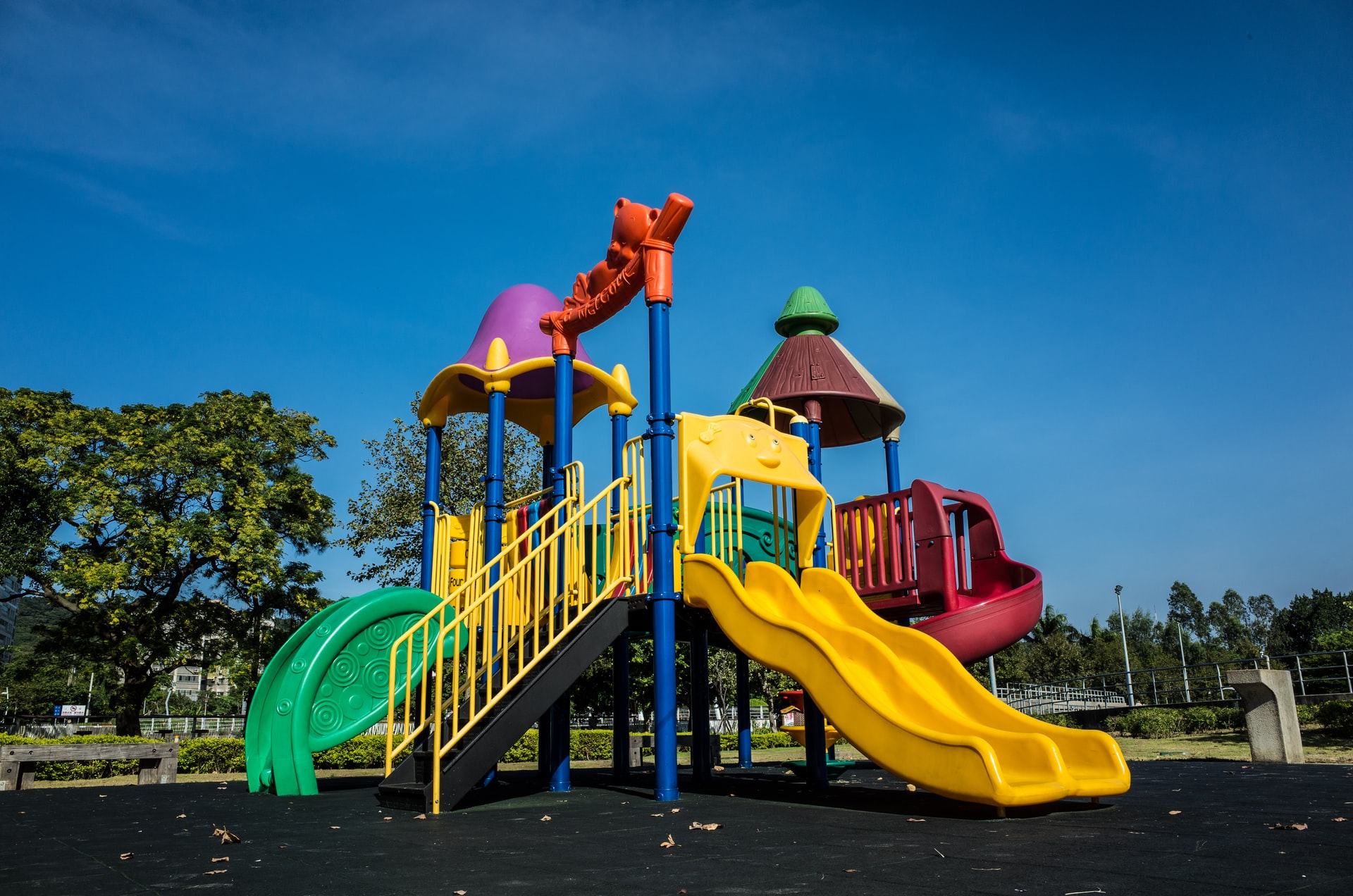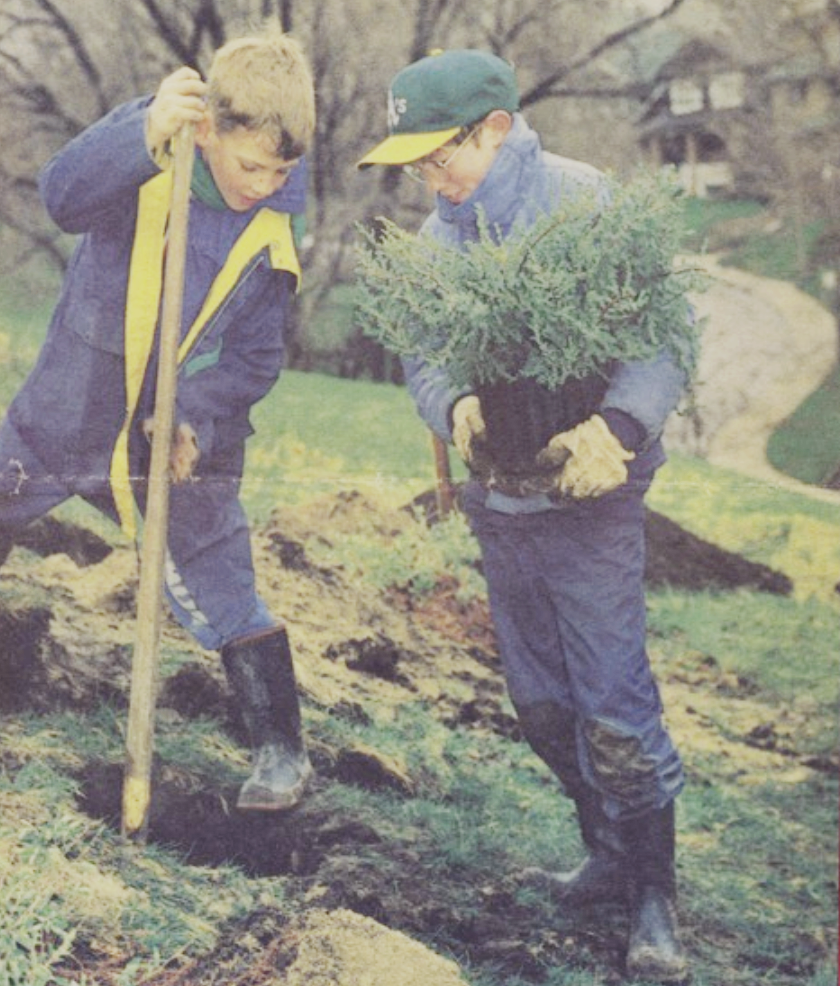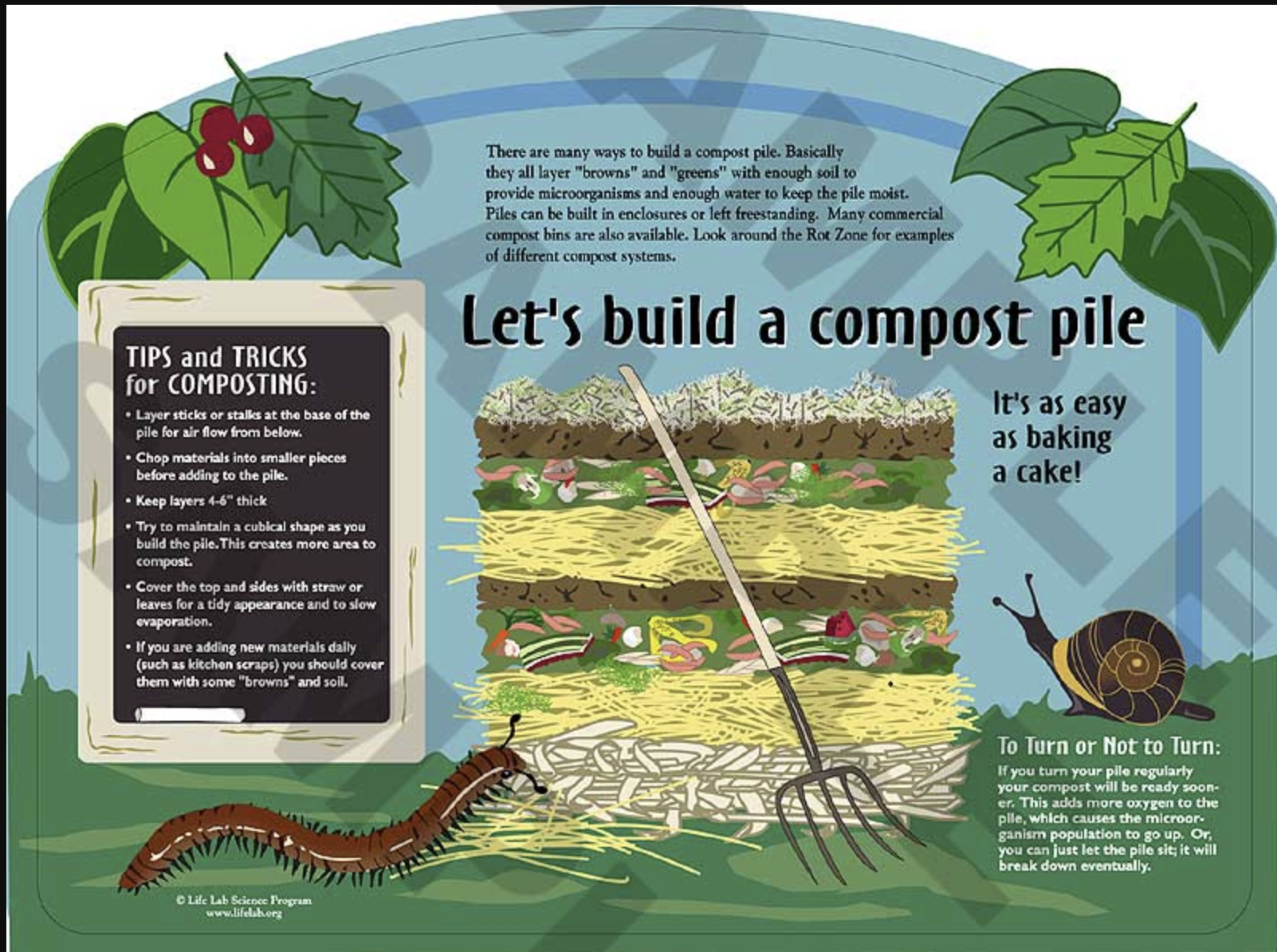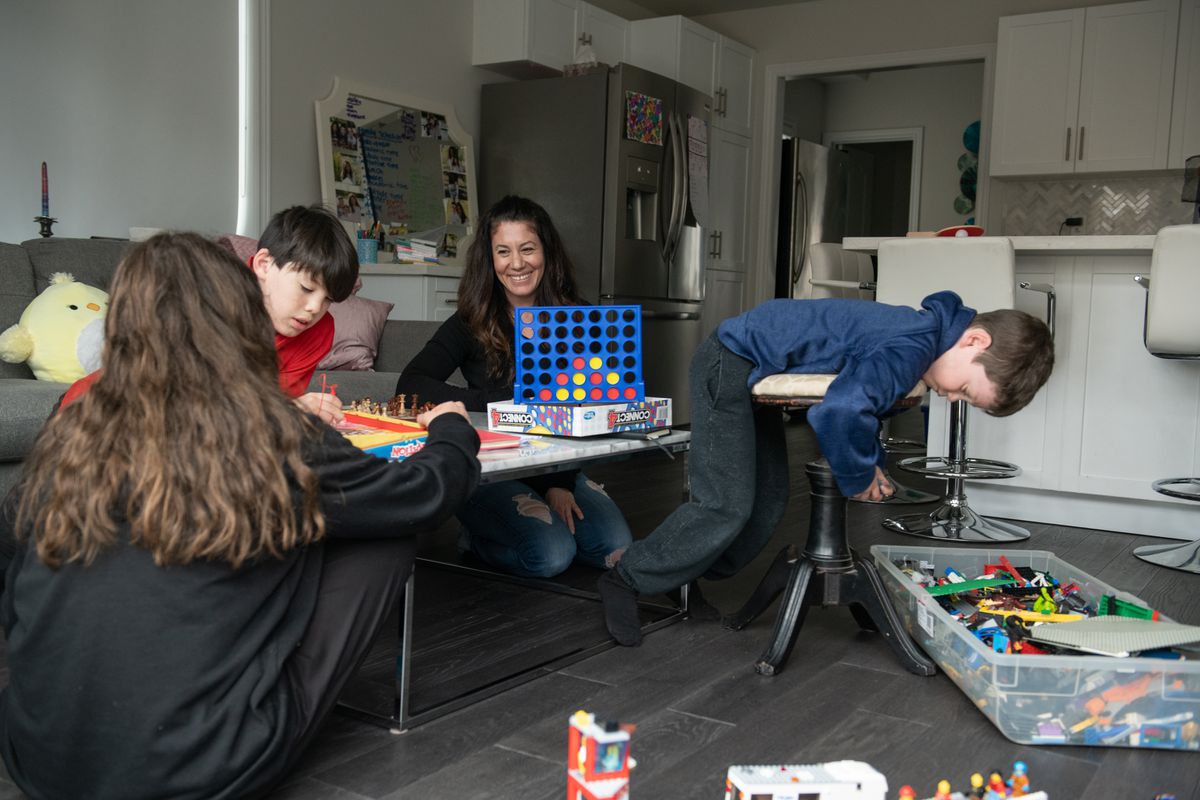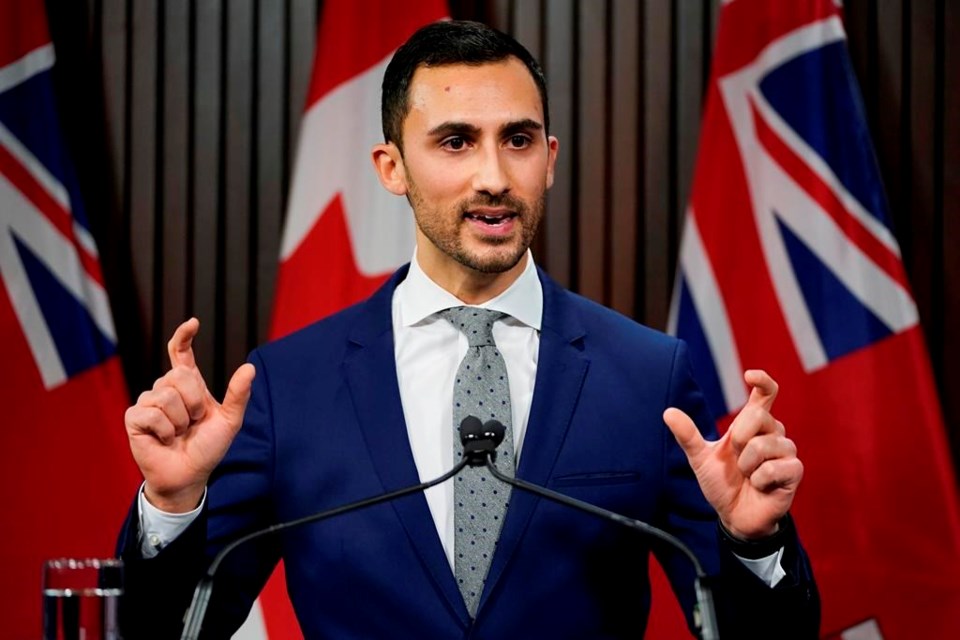Last week, we took time to pause and reflect on how vital playgrounds and green spaces are to our lives, and how much we miss them as they continue to be closed during this pandemic.
While we are home-bound, we can think about the future of school playgrounds and how we can make them greener. This week, we look at how the elements of the natural playground can be used in both large and small scale projects.
Large-Scale Municipal Example: Marge and Charles Schott Natural Playscape, Cincinnati
In Cincinnati, a converted public park demonstrates how green playgrounds work. In lieu of a static, plastic playground, the city installed a nature playground, with a variety of materials: rock, wood, water, trees & underplantings. Parents noticed that this playground facilitated creative play, habitat education, and respectful behaviour while offering a variety of forest and field habitats to explore.
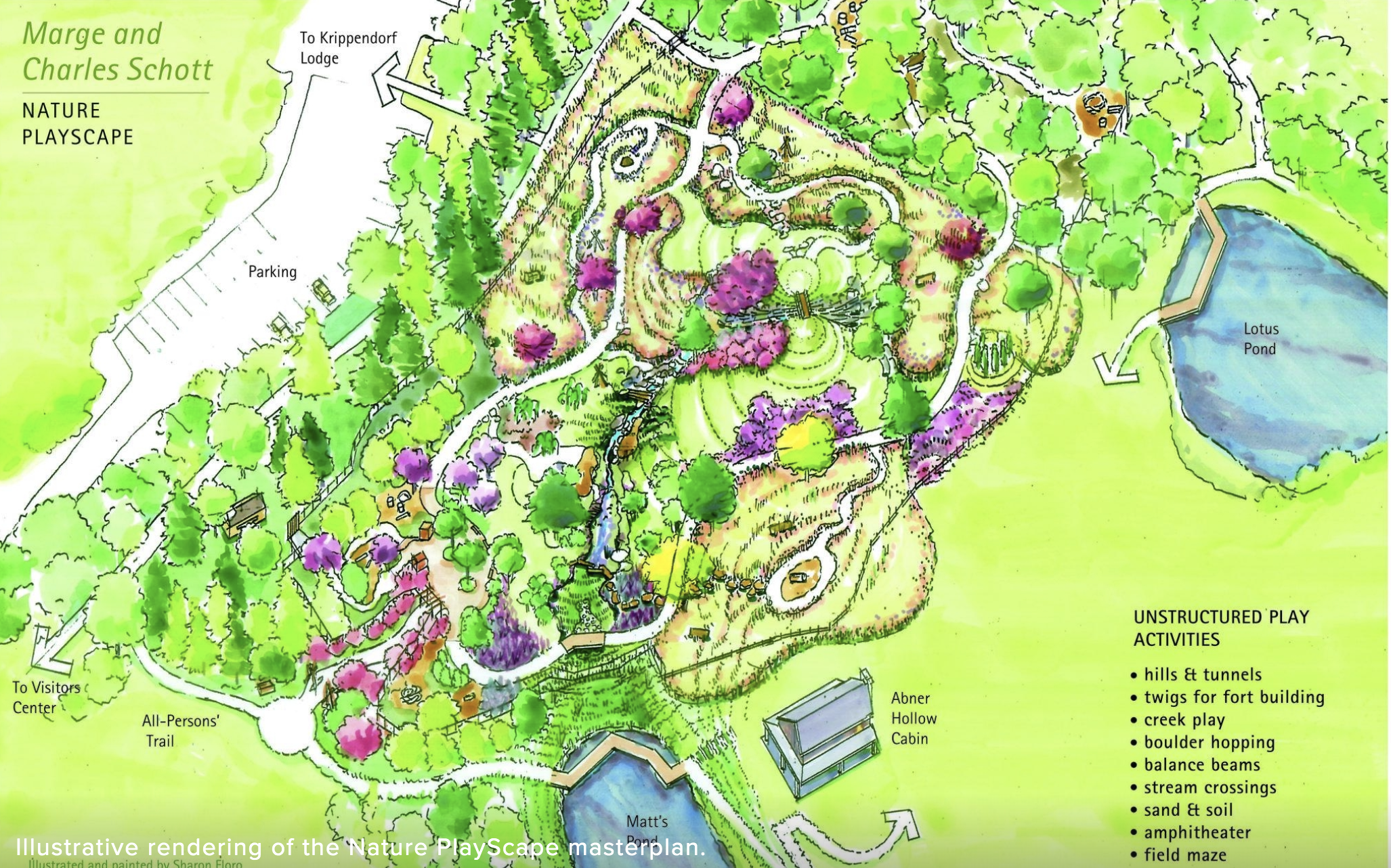
To maintain this nature-based playground, a full-time gardener and maintenance staff were required. As well, families must take on more personal responsibility for assessing risk with this type of nature-based playground.
Large-Scale School Example: Brent Elementary School, Washington, D.C.
This asphalt yard was transformed into an outdoor education space, and more than tripled in size. The new nature yard is improving student health with more physical activity, clean air, and shade. Typical summer air temperatures have decreased by 5°C by removal of the asphalt!1 The school has seen an improvement in parental engagement, as well as student attendance and reading scores.22
 By replacing asphalt with small plantings & permeable surfaces, the school ground now has improved stormwater management, important in any city with flooding and sewer issues. The new rain garden can hold huge amounts of stormwater, and the new surfaces don’t need mowing, reducing carbon emissions.
By replacing asphalt with small plantings & permeable surfaces, the school ground now has improved stormwater management, important in any city with flooding and sewer issues. The new rain garden can hold huge amounts of stormwater, and the new surfaces don’t need mowing, reducing carbon emissions.
Nature gardens also allow for educational opportunities. At Brent PS, there are green roofs unlike any other. Typically, children don’t have access to roofs and do not see planted rooftops. Brent School pioneered the use of child-scale green roofs, built on small structures accessible to children, who can learn about the process of greening our urban world.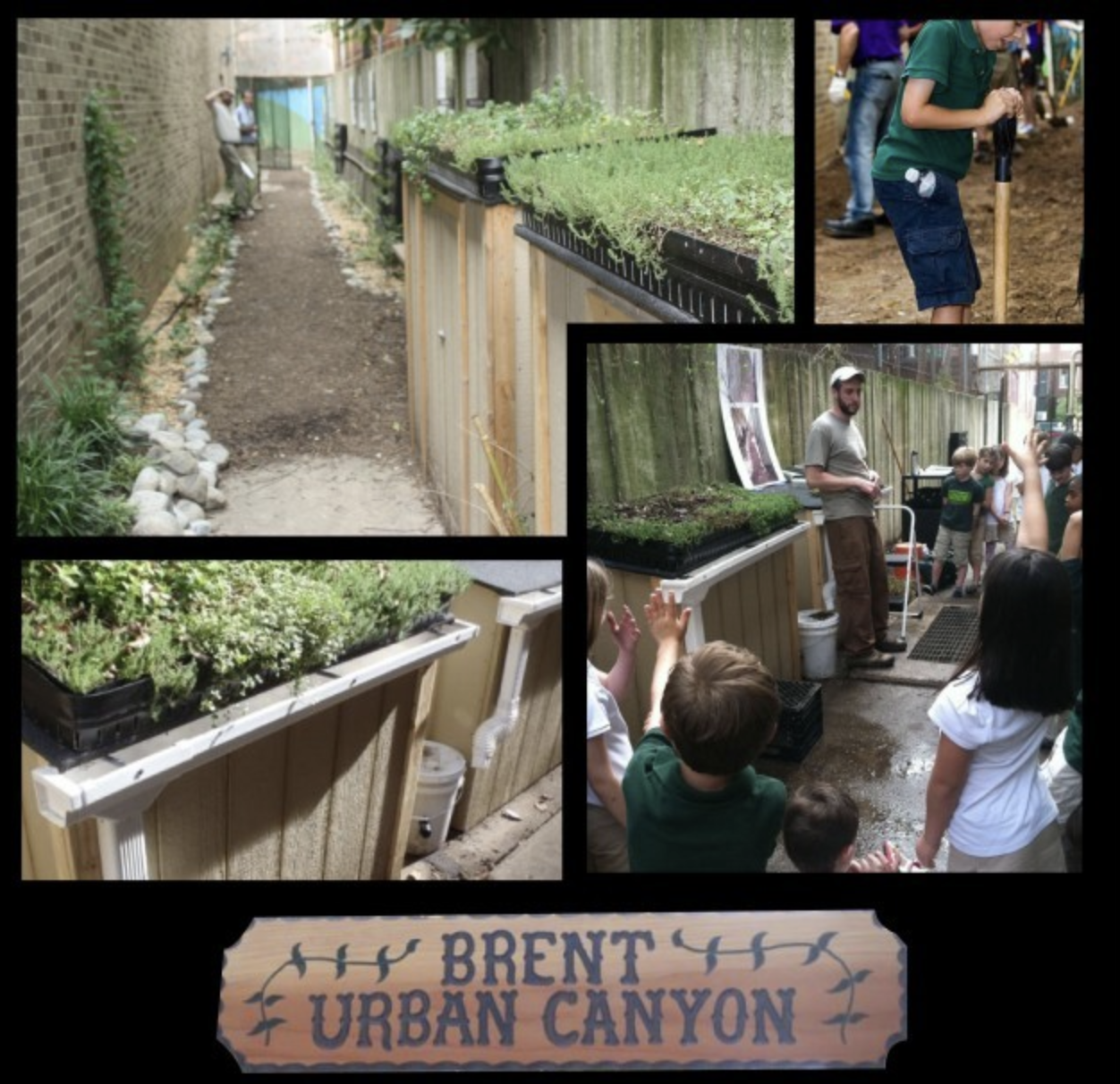
This large-scale nature-based playground also included interpretive rain gardens and interactive butterfly gardens. Staff training in environmental education was required to ensure maximum benefits were derived from this playground, as was signage to guide students and visitors. As well, staff was required to maintain the grounds.
Features of these nature-based playgrounds above can be applied to local, small-scale community examples, such as public parks, childcare centres, and health centres as well. This is also a possible model for aging infrastructures (such as Ontario’s schools) that are already candidates for renovation.
 Nature playgrounds are also solutions for city parks that have only trees & close-cropped lawns, with no other groundcover or understory plantings. Toronto’s High Park has installed a nature playground called Our Space that features education, loose pieces, and opportunities for creative play while featuring native plantings that recreate the original ecosystem.
Nature playgrounds are also solutions for city parks that have only trees & close-cropped lawns, with no other groundcover or understory plantings. Toronto’s High Park has installed a nature playground called Our Space that features education, loose pieces, and opportunities for creative play while featuring native plantings that recreate the original ecosystem.
Installing nature gardens in floodplain areas, or grounds with poor drainage makes sense as impervious surfaces are replaced with permeable ones that absorb stormwater. And areas with high traffic, such as school drop-off zones, are the perfect location to educate the public about water issues in their community!
During this time when we are missing our parks, consider asking your children for their opinions on what would make an ideal outdoor play space at their school. While we can’t go to the park at the moment, we might as well take the opportunity to imagine and dream!
On this day for #ClimateAction, two playgrounds in the Rockaways were given green roof covers: Beach 9th Plgd. & Seaside Plgd. With more on the way! pic.twitter.com/pd9gubeXnn
— S Kadinsky (@SergeyKadinsky) September 20, 2019

